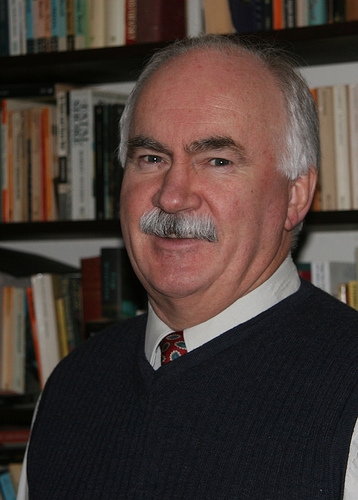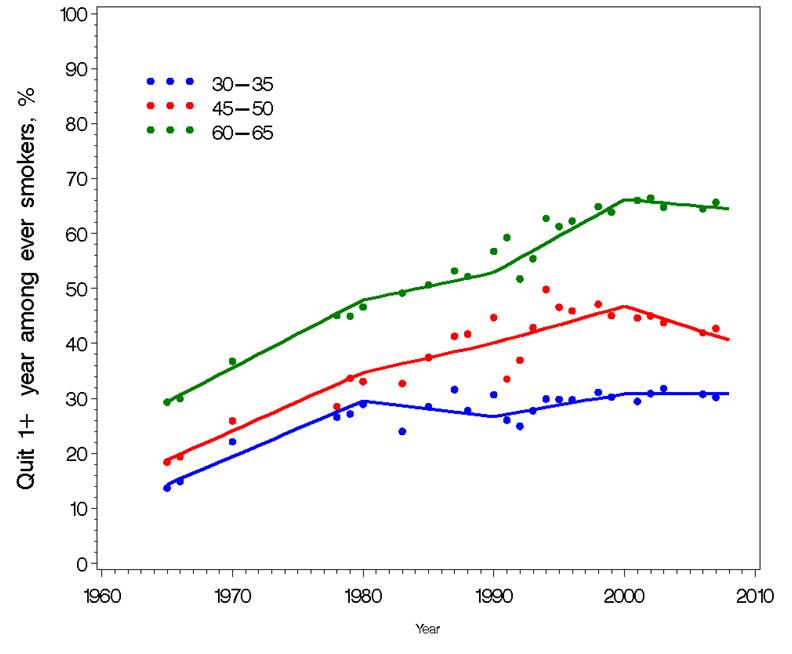UC San Diego Researchers Review Cessation Studies and Call for Change in Policy
By:
- Kim Edwards
Published Date
By:
- Kim Edwards
Share This:
Article Content

John Pierce, PhD
Smoking is a major public health issue and quitting is the single most important thing smokers can do to improve their health. In the 2012 edition of the prestigious Annual Review of Public Health, researchers at the University of California, San Diego School of Medicine have reviewed the landscape of smoking cessation over the past 20 years. During this time period, there have been improvements in pharmaceutical medications to aid cessation, and free telephone cessation coaching has become available in every state. However, recent trends in smoking cessation are troubling to tobacco control researchers.
“For the past decade, attempts to quit smoking have increased, but the proportion of people who become successful quitters has gone down” said John P. Pierce, PhD, professor of Family and Preventive Medicine and director of Population Sciences at UC San Diego Moores Cancer Center. “Widespread dissemination of cessation services has not led to an increase in the probability that a quit attempt will be successful."
The problem does not appear to be with the cessation services themselves. “Randomized trials continue to demonstrate that innovations in cessation assistance, such as the new text-to-quit service, increase success rates among smokers motivated to be part of clinical studies,” said Sharon Cummins, PhD, director of Evaluation with the California Smokers Helpline and a co-author on the study. “Indeed, one study showed that heavier smokers are much more likely to quit successfully when a doctor actively monitors the quit attempt, pharmaceutical aids are used, and the smoker receives multiple coaching calls from a quitline service”.
However, recent evidence suggests that part of the problem may lie in how cessation aids are marketed by pharmaceutical companies: many such ads suggest that quitting smoking may be as simple as putting on a patch. It appears that younger smokers in particular are now more likely to underestimate the amount of work needed in order to quit smoking successfully.
Traditionally, the majority of smokers who quit successfully have done so without assistance, and recent data suggests that this has not changed. However, current national policy discourages unassisted quitting, advising clinicians to make sure smokers who want to quit do so with pharmaceutical assistance. This policy may undermine smokers’ belief in their ability to quit on their own.

The number of people who quit smoking successfully has stalled in the United States at every age. (graph)
Pierce and colleagues noted that some of the earliest texts in psychology – written more than 100 years ago – include chapters on breaking habits such as smoking. In 1890, William James laid out a series of maxims that were widely recognized then and that still hold true today: smokers need to make a strong resolution to change; they need to act quickly on that resolution; they will be more successful if they make a personal commitment to another to be successful; and finally, it is important to understand the danger of having even a single cigarette during a quit attempt.
The researchers suggest that policy makers join those in academia for a serious review of tobacco cessation policy.
In addition to Pierce, the UC San Diego Moores Cancer Center research team included Sharon E. Cummins, PhD, Martha M. White, Aimee Humphrey and Karen Messer, PhD.
Funding support for this study was provided by the Tobacco-Related Disease Research Program (TRDRP).
Share This:
You May Also Like
New Research Debunks Fears of Supermarket Surge Pricing with Electronic Shelf Labels
Business & EconomicsStay in the Know
Keep up with all the latest from UC San Diego. Subscribe to the newsletter today.



